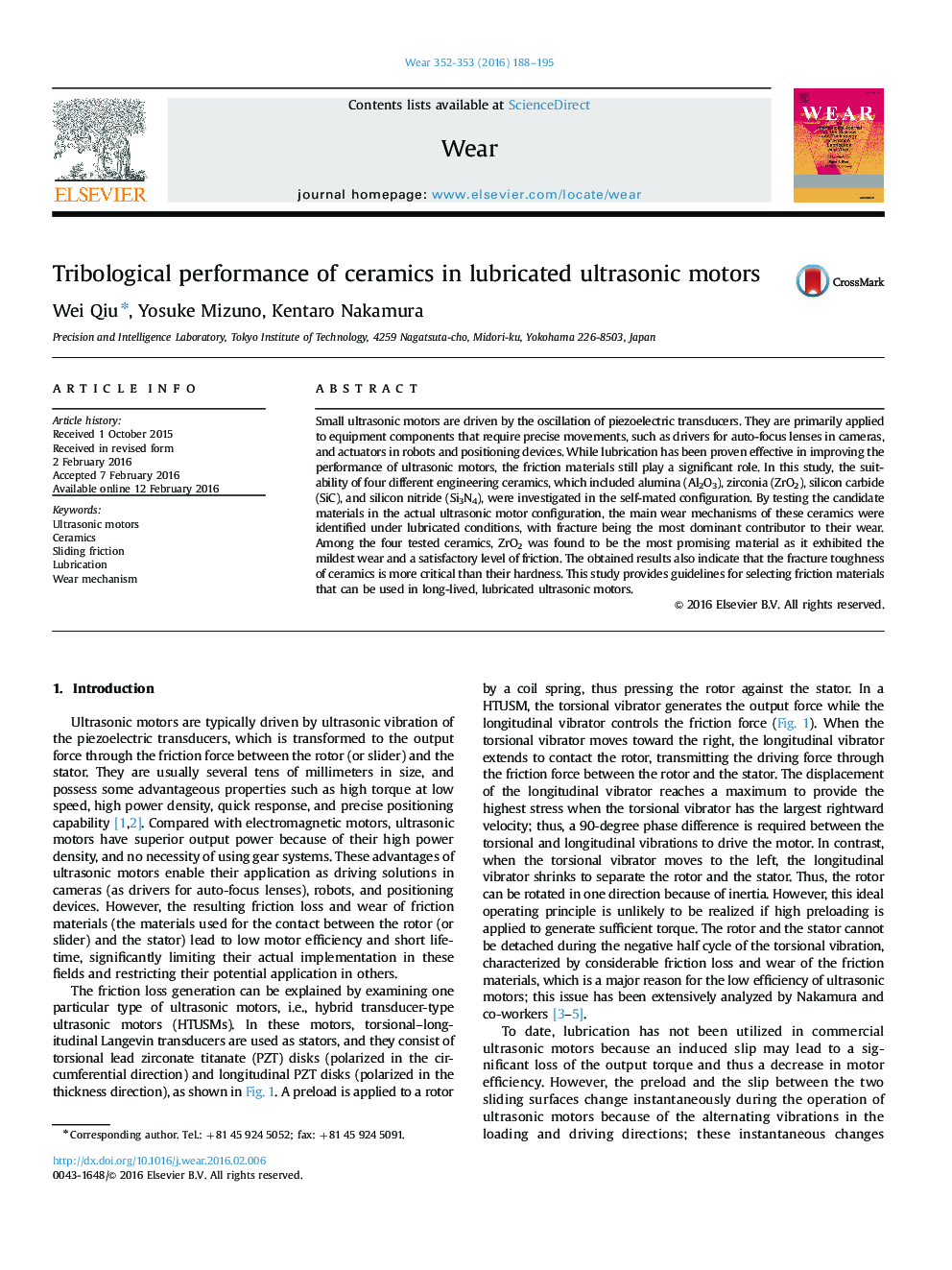| Article ID | Journal | Published Year | Pages | File Type |
|---|---|---|---|---|
| 616924 | Wear | 2016 | 8 Pages |
•The tribological performance of ceramics in lubricated ultrasonic motors is investigated.•The main wear mechanism can be described by mechanical fracture of tested ceramics.•The ZrO2 ceramic exhibits the mildest wear among the tested ceramics.•Ceramics possessing high fracture toughness are desirable for lubricated ultrasonic motors.
Small ultrasonic motors are driven by the oscillation of piezoelectric transducers. They are primarily applied to equipment components that require precise movements, such as drivers for auto-focus lenses in cameras, and actuators in robots and positioning devices. While lubrication has been proven effective in improving the performance of ultrasonic motors, the friction materials still play a significant role. In this study, the suitability of four different engineering ceramics, which included alumina (Al2O3), zirconia (ZrO2), silicon carbide (SiC), and silicon nitride (Si3N4), were investigated in the self-mated configuration. By testing the candidate materials in the actual ultrasonic motor configuration, the main wear mechanisms of these ceramics were identified under lubricated conditions, with fracture being the most dominant contributor to their wear. Among the four tested ceramics, ZrO2 was found to be the most promising material as it exhibited the mildest wear and a satisfactory level of friction. The obtained results also indicate that the fracture toughness of ceramics is more critical than their hardness. This study provides guidelines for selecting friction materials that can be used in long-lived, lubricated ultrasonic motors.
